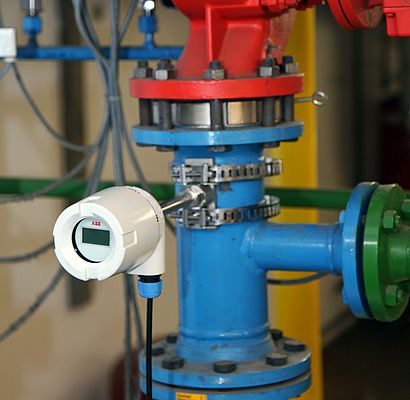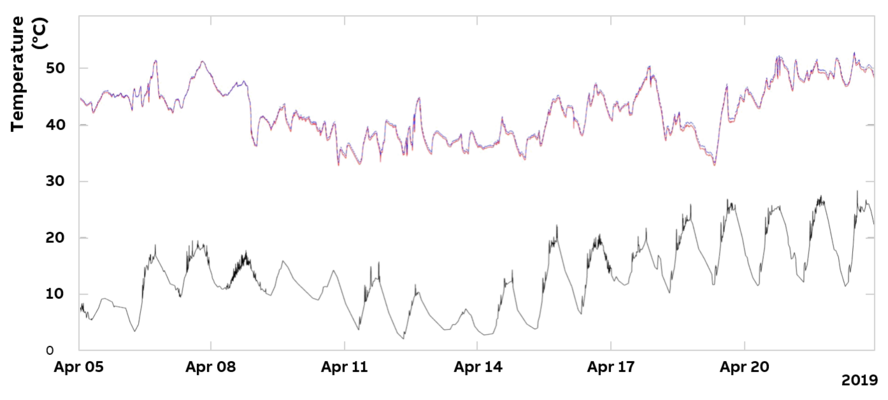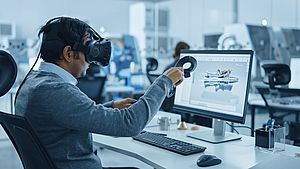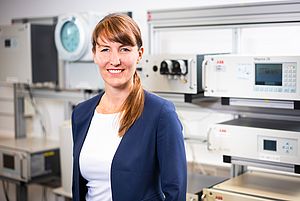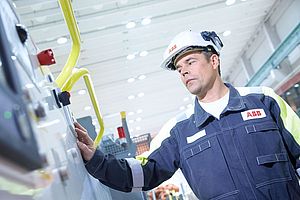For many years, received wisdom in the world of industrial temperature measurement has pointed to the need to use thermowells. Essentially metal sheaths designed to protect the measurement sensor against the process being measured, thermowells have become commonplace throughout industry and while they can be effective in protecting the temperature sensor, their use is not without problems.
Foremost amongst these problems is the need for them to be in physical contact with the process medium, which means first shutting down the pipeline and then drilling a hole through which the probe can be inserted. This may also require the addition of flanges or fittings to help maintain pipeline integrity and satisfy safety requirements. Aside from cost and time, this practice can also have safety implications, especially in applications where liquids may be flowing at high speeds and / or pressures which could cause injury if the pipeline is not properly shut down.
Another problem with using thermowells is the presence of abrasive materials in the flow media. Particles moving through piping at high speeds, for example, can result in a thermowell becoming worn over time, increasing the risk of it becoming damaged and potentially reducing its lifespan. Special thermowell materials can be used to counter this, but the exotic / non-standard nature of the materials used can substantially increase the total purchase price.
To avoid problems such as premature wear and potential failure, thermowells must be regularly inspected and replaced if necessary, adding to the costs. These inspections require at least a partial shutdown, usually requiring complete emptying of the system. Thermowells also need to be cleaned, which can incur further costs, including those resulting from having the pipeline shut down while the probe is removed.
There is also a safety implication, as a thermowell placed in flowing media can experience vibration effects due to the formation of vortices. In extreme cases, this vibration can cause structural failure of the thermowell, which can have serious consequences for the whole process.
Because of these risks, the standards governing the stability of thermowells, such as ASME PTC 19.3 TW-2016, have become ever more restrictive, increasing engineering costs and restricting the ability to use conventional thermowells in some cases.
Why you don’t need a thermowell
Given these factors, it may come as a relief to know that a thermowell may not even be necessary in many cases. To understand why, it is necessary to first understand the physics of a typical flow line where a liquid or liquid-like mixture is flowing. The behavior of a flow in a pipeline is known as the flow profile. There are three main categories of flow profile, each related to the velocity of the liquid. These categories are termed as laminar, transitional and turbulent. The vast majority of existing piping and in plants to come are and will be metallic.
This makes non-invasive surface temperature measurement an increasingly attractive option for process measurement applications, where around 70 percent of installations feature turbulent, rather than laminar, flows. To date, the challenge has been to accurately capture the surface temperature of the piping and the dynamic temperature changes.
Opt for non-invasive
Devices to measure the surface temperature piping are not new. So-called ‘skin temperature’ sensors, for example, which measure the temperature at the pipe wall, have been available for a while. These devices typically employ either thermocouples or resistance temperature detectors (RTDs) that can be mounted on the pipe surface, and while these can be effective, their performance tends to be hampered by poor design, poor location, or bad installation, reducing their accuracy and response times. If not properly insulated, they can also be sensitive to ambient conditions that can affect their measurement accuracy.
Achieving a true surface measurement calls for something that can factor out the potential errors that can affect the temperature reading. This is now possible with the latest generation of surface mounted temperature measurement technology. ABB’s own TSP-341 non-invasive temperature solution, for example, uses the same sensor and transmitter technology as in a thermowell installation, but with software replacing the actual thermowell itself.
The software measures the readings from dual sensors – one measuring the temperature of the pipe wall, the other measuring the ambient temperature – and uses the resulting data to calculate and output the process temperature in real time. By taking account of the ambient conditions during the measurement, the transmitter significantly increases the accuracy and the responsiveness of the surface measurement. Coupled with models that predict the range of applications of the sensor i.e. liquid like processes flowing in the turbulent regime in metal pipes, the accuracy and response times are close to or better than invasive measurement.
The effectiveness of this technique compared to a conventional thermowell is demonstrated by the graph, which shows the result of test comparing measurements derived by the two techniques. As can be seen by a comparison of the two traces, there is little difference in performance, with the non-invasive device closely matching its invasive counterpart.
Dr. Guruprasad Sosale of ABB Measurement & Analytics


